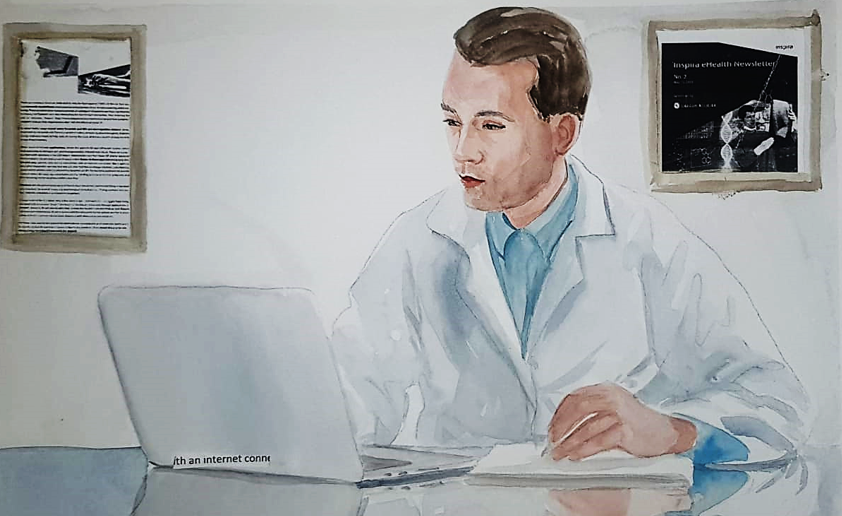
Understanding the pathophysiology of the negative symptom dimensions of schizophrenia
- The negative symptom dimensions of apathy and diminished expression have only recently begun to be specifically targeted by treatment research
- Increasing evidence suggests that these negative symptom dimensions have partly distinct behavioral, cognitive and neural correlates (i.e., a specific multi-level framework)
- The basis of identifying mechanistic targets for establishing new biological and psychosocial treatments is formed by developing multi-level models of distinct negative symptom dimensions/domains.
- “Multi-level models of distinct negative symptom dimensions/domains (1) provide an avenue to integrate different biological and psychosocial approaches in combined treatment approaches and (2) could advance clinical-decision making and treatment tailored to the individual needs of our patient.”
In this section
This article by Bègue et al. surveys and synthesizes the current literature on neuroimaging, behaviour and clinical studies of the two negative symptom dimensions of apathy and diminished expression. It provides a narrative overview, focusing on the two distinct dimensions of apathy and diminished expression on which the negative symptoms of schizophrenia can be mapped onto. The domains of avolition, asociality and anhedonia are included under apathy, while the domains of blunted affect and alogia are included within diminished expression. Understanding the behavioural, cognitive, and neural mechanisms related to these negative symptom dimensions of schizophrenia has progressed, but an unmet need remains in translating these mechanisms to the treatment of negative symptoms.
This study claims that „one major weakness of previous basic and clinical studies is that negative symptoms and their underlying pathophysiology were often treated as if they were a monolithic entity.” The heterogeneity in length and course of negative symptoms across the lifespan, their fluctuations over time, their influence by differential baseline levels, premorbid functioning and the duration of untreated psychosis also still need to be considered in the research of negative symptoms. „The study of the longitudinal evolution of negative symptoms with a pathophysiological multi-level approach, as advocated here, may therefore be crucial to tackle these issues. The study believes that the treatment of negative symptoms can only be advanced by systematically targeting the negative symptom dimensions of apathy and diminished expression and uncovering their exact pathological mechanisms.
For the apathy dimension, there have been various aspects of motivation and goal-directed behaviour
directly related to the clinical manifestation of apathy. The deficits appearing in apathy include blunted reward anticipation, impaired reward learning and effort-based decision-making, and additionally cognitive mechanisms such as neurocognitive deficits and dysfunctional beliefs. On a neural level, neuroimaging has shown that the “neural substrates of apathy can be mapped on circumscribed regions within a prefrontal-striatal network. Key structures in this network are the ventral/dorsal striatum, ventromedial PFC/OFC, DLPFC and ACC, all being implicated in normal motivated behaviour. In this regard, uncovering distinct prefrontalstriatal pathways related to apathy could be key to improve treatment.”
For the diminished expression dimension, mechanistic models and neural substrates are less developed when compared with the apathy dimension. Deficits in patients with schizophrenia occur in emotion expression, emotion perception and in cognitive resources for speech production, but a direct association with the clinical manifestation of diminished expression is shown by very few studies. Therefore, even though emotion processing and cognition will potentially respond to psychosocial interventions, diminished expression is still far-off from individualized treatment.
The study suggests that “a differentiated approach allows to systematically define multi-level frameworks for distinct negative symptom dimensions/domains. This will form the basis to identify mechanistic targets for the development of new biological and psychosocial treatments as well as ways to quantify their efficacy. Domain specific mechanistic and neural models could be translated into preclinical models in order to develop new selective pharmaceutical targets. Multi-level models of negative symptom dimensions/domains would enable the evaluation of clinical outcome in treatment trials on several levels including clinical, biological, behavioural and neural measures.” Although negative symptoms are still an unmet medical need, the article points out that at least one drug (cariprazine) outperformed another second-generation antipsychotic (risperidone) in the treatment of negative symptoms.
Multi-level frameworks of negative symptom dimensions may be able to guide clinicians to precisely define inter-individual differences between patients. “Specifically, clinicians may be able to differentiate complex clinical pictures (apathy vs. diminished expression, primary vs. secondary negative symptoms) and directly relate symptoms to dysfunctional mechanisms and neural substrates.” By having such personalized symptom models, treatment can potentially be tailored to patients’ individual needs.
References
- Bègue I, Kaiser S, Kirschner M., Pathophysiology of negative symptom dimensions of schizophrenia – Current developments and implications for treatment. Neuroscience & Biobehavioral Reviews https://doi.org/10.1016/j.neubiorev.2020.06.004
REAGILA CONTROLS NEGATIVE SYMPTOMSOUR PRODUCT ON NEGATIVE SYMPTOMS
Negative symptoms of schizophrenia can occur as primary symptoms that are part of the underlying pathophysiology of schizophrenia or as secondary symptoms that Negative symptoms of schizophrenia can occur as primary symptoms that are part of the underlying pathophysiology of schizophrenia or as secondary symptoms that
more…CLOSER LOOK AT NEGATIVE SYMPTOMS!CLOSER LOOK AT NEGATIVE SYMPTOMS!
Negative symptoms are symptoms of loss or absence of normal function relating to motivation and interest, or emotional expression. Evidence does not support theNegative symptoms are symptoms of loss or absence of normal function relating to motivation and interest, or emotional expression. Evidence does not support the
more…

